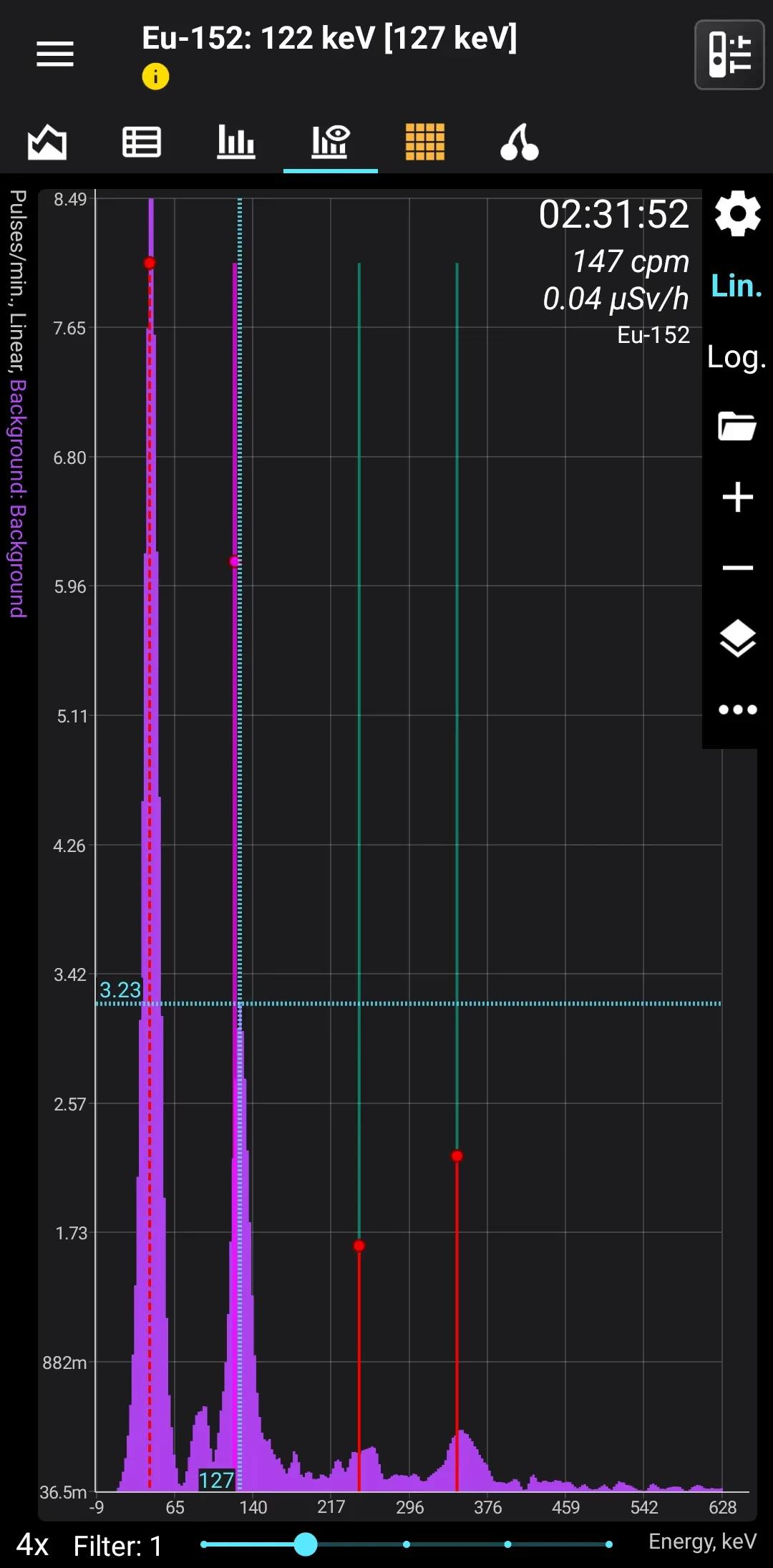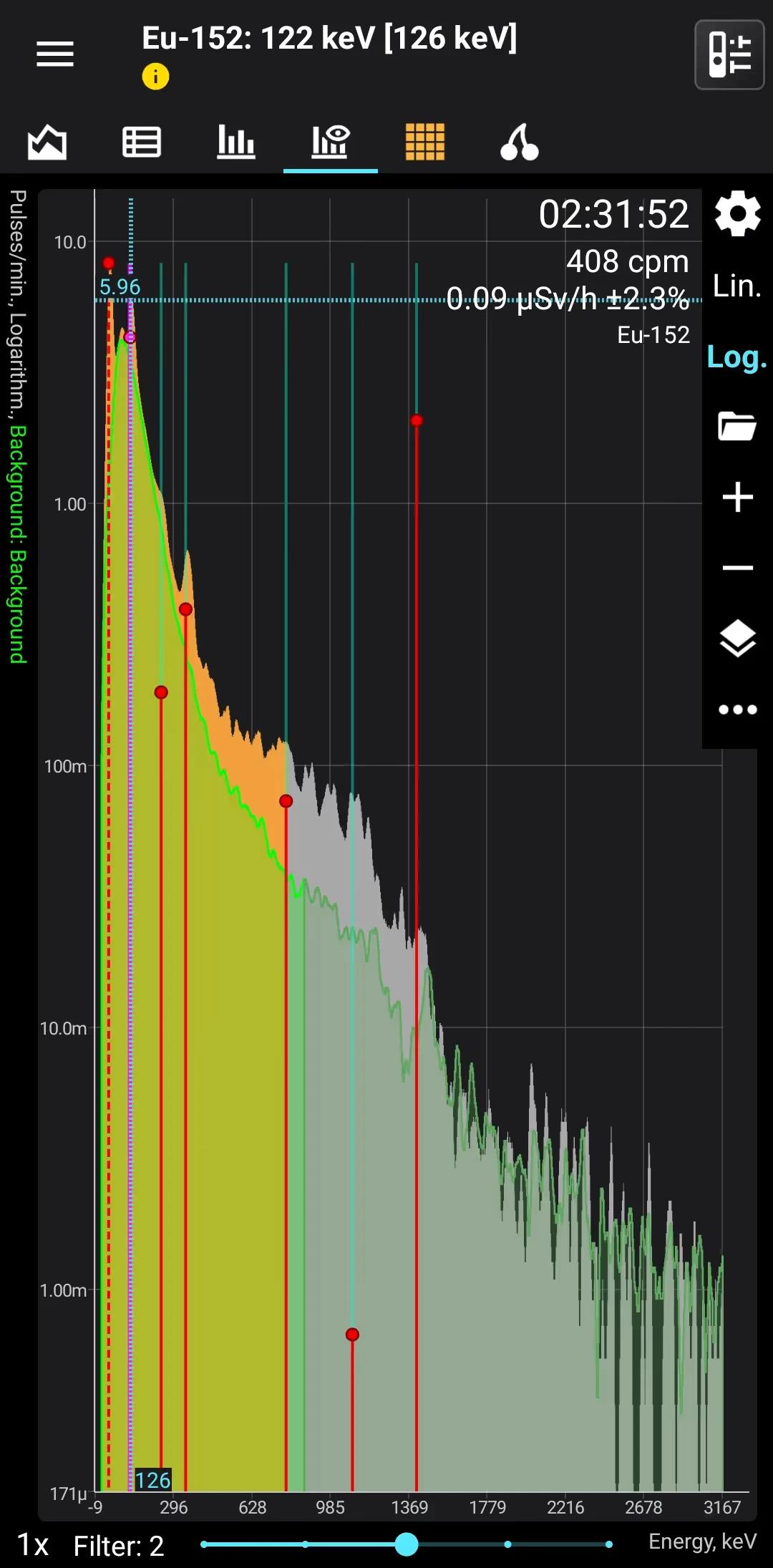
Europium-152 (Eu-152) is a radioactive isotope of europium with a half-life of approximately 13.5 years. It decays primarily by beta emission and also emits gamma radiation, producing a range of characteristic gamma-ray lines that make it highly detectable through gamma spectrometry. Eu-152 is typically produced artificially in nuclear reactors through neutron activation of europium-151 or in particle accelerators.

Eu-152 is primarily used as a calibration source for gamma-ray detection instruments. Its wide range of gamma emissions at well-defined energies makes it ideal for calibrating and testing gamma spectrometers used in environmental monitoring, radiological safety, and nuclear research. Eu-152 is also employed in scientific studies to investigate the behavior of europium in nuclear and chemical processes.

Eu-152 does not occur naturally in significant quantities. It is produced in controlled environments, such as nuclear reactors or laboratories, through the neutron activation of stable europium isotopes. Eu-152 can also be found in spent nuclear fuel and is a byproduct of nuclear fission. Trace amounts may be encountered in contaminated areas following nuclear activities. Its production and handling are strictly regulated to minimize environmental and health risks.


Eu-152
Europium-152
Half-life: 13,5 years Main emission lines: 40, 122, 244, 344, 778, 1098, 1408 keV
Decay mode ec Beta+
Beta+
| Avg. En., keV | Intensity, % | Decay En., keV |
| 338.3 | 0.023 | (1752.8) |
| 230.8 | 0.00260 | (1508.1) |
Gamma
| Energy, keV | Intensity, % |
| 121.7817 | 28.53 |
| 1408.013 | 20.87 |
| 964.057 | 14.51 |
| 1112.076 | 13.67 |
| 1085.837 | 10.11 |
| 244.6974 | 7.55 |
| 867.380 | 4.23 |
| 443.9606 | 2.827 |
| 1212.948 | 1.415 |
| 688.670 | 0.856 |
| 1005.27 | 0.659 |
| 1457.643 | 0.497 |
| 563.986 | 0.494 |
| 295.9387 | 0.440 |
| 919.337 | 0.419 |
| 488.6792 | 0.414 |
| 810.451 | 0.317 |
| 444.01 | 0.298 |
Annihilation
| Energy, keV | Intensity, % |
| 511.0 | 0.051 |
X-rays
| Energy, keV | Intensity, % |
| 40.117 | 37.8 |
| 39.522 | 20.87 |
| 45.291 - 46.705 | 14.85 |
| 4.992 - 7.715 | 14.0 |
| 45.291 - 45.754 | 11.81 |
| 46.564 - 46.586 | 3.05 |
Decay mode ec Beta-
Beta-
| Avg. En., keV | Intensity, % | Decay En., keV |
| 221.7 | 13.73 | (695.7) |
| 535.5 | 8.24 | (1474.6) |
| 112.34 | 2.430 | (384.9) |
| 47.38 | 1.831 | (175.5) |
| 364.7 | 0.913 | (1063.5) |
| 295.1 | 0.284 | (888.4) |
| 226.9 | 0.264 | (709.7) |
Gamma
| Energy, keV | Intensity, % |
| 344.2785 | 26.59 |
| 778.9045 | 12.93 |
| 411.1165 | 2.237 |
| 1089.737 | 1.734 |
| 1299.142 | 1.633 |
| 367.7891 | 0.859 |
| 678.623 | 0.473 |
| 586.265 | 0.455 |
Annihilation
| Energy, keV | Intensity, % |
| 42.996 | 0.440 |